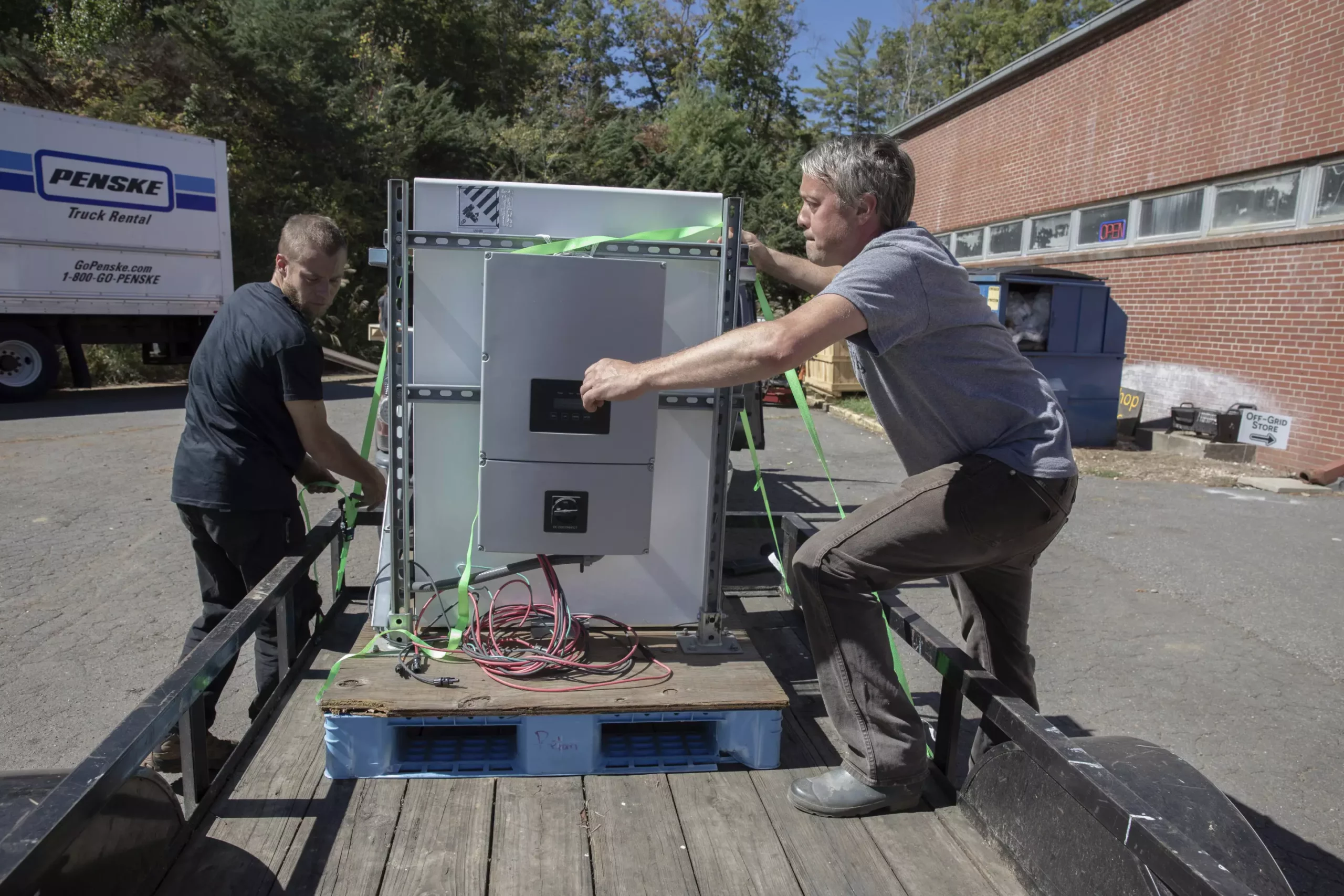In the wake of Hurricane Helene, which ravaged the mountainous regions of North Carolina, the once serene landscapes became battlegrounds of survival. Power lines lay fragmented, and roads washed away, leaving many residents grappling with the harsh realities of prolonged outages. In Tipton Hill, a small community nestled within the Pisgah National Forest, Bobby Renfro, a retired railroad worker, assumed the role of a makeshift leader. He transformed a former church into a resource hub aimed at aiding his neighbors during this unprecedented crisis.
Renfro’s struggles resonate on a deeply personal level. The relentless hum of a gas-powered generator has become a persistent reminder of both desperation and necessity. He invested substantially in this generator—$1,200 for the unit itself, with ongoing fuel costs soaring into the thousands. This is not merely about convenience; for many of his neighbors, the generator is a lifeline. It preserves critical medications like insulin and powers essential medical devices, from pulmonary nebulizers to oxygen machines. “We have no resources for nothing,” Renfro lamented, encapsulating the stark reality faced by those living in isolation atop the mountain.
The ripple effects of the power outage are far-reaching. Over 43,000 residents within the region remained in darkness, and the trouble extends beyond mere inconvenience. Modern life largely depends on electricity—the ability to store food, recharge personal electronics, or access vital services like water is impeded. The situation is not just an inconvenience but poses real health risks. Crews dispatched from around the United States and even Canada are striving to restore power, yet the challenging terrain complicates recovery efforts. In a region known for its dense forests and rugged landscapes, many roads and bridges have been lost to erosion, making traditional restoration methods unviable.
“As crews work, they’re not just repairing but rebuilding from the ground up,” stated Kristie Aldridge, a representative from North Carolina Electric Cooperatives. The prolonged nature of recovery efforts underscores the complexities of rural disaster responses that often blend urgency with unpredictability.
Amidst the chaos, a glimmer of hope is emerging. Recently, Renfro received an innovative solar generator, courtesy of the nonprofit organization Footprint Project. This sustainable technology features six solar panels, a robust battery system, and an inverter, representing a transitional form of power that is not only quieter but also operates at no ongoing cost. Renfro expresses a hopeful sentiment: having electricity—even intermittently—can offer an important psychological boost to a community that has seen their stability disrupted.
Footprint Project, co-founded by Will Heegaard and Jamie Swezey, is rapidly adapting its humanitarian efforts to the mounting challenges posed by the storm. Their focus is not merely on emergency responses but on fostering sustainable energy solutions that can withstand future calamities. Their initiative has already placed solar microgrids and other technologies at multiple locations around the region. However, as Swezey noted, the focus remains on compensating for—or augmenting—traditional power sources in an area heavily reliant on gas and diesel-powered generators.
The response to this crisis isn’t solely driven by larger organizations. Local volunteers are stepping up, acting as vital links in the chain of aid. Individuals like Hayden Wilson and Henry Kovacs, artisans known for their glassblowing crafts, have repurposed their resources to lend immediate assistance. They traverse the winding, often treacherous roads, delivering essential supplies and equipment wherever they are needed.
Similarly, community hubs are emerging in unexpected places; Julie Wiggins, for example, has transformed her driveway into a gathering point for around 30 families. Despite the challenges posed by blocked roads and fallen trees, she managed to establish a makeshift clinic, providing a space for the community to access aid and supplies. The introduction of solar power equipment has drastically changed her operation, allowing her to run vital equipment and connectivity for better communication with the outside world.
Despite the flurry of activity aimed at restoring power and support, the situation remains critical. As a painful echo of Hurricane Maria’s devastating aftermath in Puerto Rico, where communities went without electricity for months, the implications of Hurricane Helene highlight the importance of sustainable disaster response.
Duke Energy is implementing lessons learned from previous disasters, employing helicopters to facilitate the installation of damaged infrastructure where traditional methods prove insufficient. The need for ongoing support is clear; as Swezey noted, “We know there are people who will need help long after the power comes back.”
In the end, the narrative of Tipton Hill is emblematic of the resilience found in the human spirit amidst adversity. It reveals not merely the struggles faced in the aftermath of a natural disaster but also the extraordinary capacity for communities to pull together and innovate solutions that not only offer immediate relief but lay the groundwork for a more sustainable future.


Leave a Reply